We continue today’s maritime theme with the latest in our series of aesthetic appreciations of sublime machines…
The Battleship is one of the most glorious, evocative and ultimately useless machines ever created by human beings.
They’re fast: in their heyday of displacement speed vessels, they were the fastest things on the high seas. They’re huge; they’re made of foot thick steel armour, they have brobdingnagian cannons on them. Some of the Washington treaty battleships had such powerful guns, they could have capsized if they lit them all off at once.
Dreadnaughts were the tumescent penii of navies from 1900 until 1942 or so, just as aircraft carriers and nuclear ballistic missile submarines are now. Navies were then measured by how many Capital ships they had. The idea was, if you had two and your enemy only had one, you could go blast the enemy’s one ship and be the ruler of the seas. Ruler! Of the seas! No small ships could possibly sink your battleship (at least, according to the doctrine of the day), so if you had some battleships, and the enemy didn’t; you were in charge of Neptune’s realm.
Guns that squirted out bullets as heavy as a Volkswagon; 14″, 16″, 18.1″ in diameter! Armor a foot and a half thick! Giant coal and oil burning steam engines creating 150,000 horsepower and belching out enormous clouds of smoke! 60,000 ton craft at 30 knot speeds! Sweet baby Jesus, that’s damn cool. However, it was never real practical, except for the occasional shore bombardment, and for comparing proverbial dong size with the navies of other nations.
The idea of battleships duking it out in the high seas is pretty ridiculous when you stop to think about it. It never really happened unless you count the Battle of Jutland. And the Battle of Jutland was really an exercise in how moronic modern navies are. There was no real reason for those battleships to fight a duel the way they did except that both sides had a bunch of battleships. If the nations of the world had the equivalent cost invested in submarines or destroyers, maybe the same thing would have happened. Maybe the subs and destroyers would have done better. Maybe they could have made little cardboard rowboats with piles of money in them, and thrown petrol bombs at each other, for a more or less equivalent outcome. Both sides claimed victory in this battle, but the upshot was that nobody wanted to risk their big expensive battleships in such an engagement again, because both sides lost a bunch of outrageously expensive ships. It was the same kind of stupidity displayed by land forces during that particular war: line up, one against the other, and pound the other side to jelly. While I am a bloodthirsty red-necked American who loves war and giant guns and battleships, even I think this battle was just plain silly.
The Great War is my favorite to study, both because I like dumb stuff, and it was the dumbest war ever, and because it was the dawn of the modern world. Everything about modern life can trace its origins to the era of 1914-1919; all the bad, all the good, all the stupid and what little cleverness there is all comes from that time. Other than the invention of antibiotics, we really haven’t appreciably advanced beyond that era: something we can’t see now because we have iphones and the internet, but something future historians will consider as obvious as the fact that the Dark Ages started with the sack of Rome. Just as Western Civilization staggered and faded after the fall of Rome, Western Civilization has never really recovered from the shock of the Great War. Cultures which endured and developed over a thousand years were wiped out, never to return again. Western culture, abstract thought and artistic development: nothing important has developed since 1919; we’re still reeling from the shock. If you want to understand the present: contemporary history started in 1914. The battleship isn’t a bad place to nose around and figure out where we are and how we got there.
The way I see it, the battleship is sort of the ultimate embodiment of the Western military mind. Historically speaking, at least if you believe in the theories of Victor Davis Hanson, Western Civilization defeated other cultures using phalanx tactics as developed by the ancient Greeks; armor plus distance weapons. You knit your shields together and make an impenetrable shell, and poke your spears at the enemy through the shell. The battleship was the biggest armor with the longest distance guns. Almost every large scale war fought by Western cultures (with the notable exception of the wars of Belisarius) followed this pattern. Napoleonic warfare was just this, with guns instead of spears. The American Civil War was guns and forts, but the same idea. March at the enemy in formation and shoot at him until he is dead! This was a winning tactic against every civilization the West went up against, except the Mongols and other mounted archers, who consistently slaughtered Western armies, a fact which Hanson conveniently forgets about in all his books.
The Great War proved the ultimate limitations of the phalanx idea for all times, since the Hun and Mongol invasions were apparently not enough. In fact, innovations of WW-1 changed the face of Western warfare forever. From the antics of T.E. Lawrence in the Middle East, to the innovations of the Stoßtruppen on the Western front, to the adventures of the Arditi of Gabrielle D’Annunzio on the Austrian front: manoeuvre warfare was proven superior to phalanx tactics. This was really only demonstrated on a wide, irrefutable scale in WW-2 by the German General Staff and Patton (even then, the idea was not well accepted). It was then we discovered what the Mongols always knew: manoeuvre warfare works better. If the enemy comes marching at you in his phalanx, you are better off going around him and slaughtering him from the rear than hitting him head on. The Mongolians knew it; that’s why they were unstoppable warriors. The Mongols never had the societal organization the West did, so they could never take advantage of their successes, and their various empires only served to make the Russians and Chinese paranoid, and Eastern European women more exotic looking.
Manoeuvre warfare is now American combat doctrine; mostly reified by a lone genius former fighter pilot named John Boyd. Many aspects of the Western way of phalanx war survive; we still have our proverbial battleships; useless as they may be. We just don’t recognize them as such. For example; armored missile silos, as opposed to missiles on rail cars. For missile silos, just target the enemy’s silos with lots of missiles and you can duke it out and win (just like the phalanx). If he puts his missiles on rail cars, you haven’t got a chance of hitting them all. So it was, metaphorically, with the actual battlewagon; when it was at the peak of its capabilities, it was overcome by the manoeuvre warfare tactics of the aircraft carrier (which is itself probably made obsolete in real modern warfare by the cruise missile, the internet and the satellite). The torpedo boat probably would have done the same thing against the battleship had it been used properly. In fact, when it was, it did pretty well.
The lovely and awe-inspiring battleship Musashi; most fearsome battleship ever built, before and after it discovered manoeuvre warfare and the torpedo.
So, take a few minutes to contemplate the mighty battlewagons of the past. They were neptunian, iron-shod warriors of the deeps! They were giant mechanical knights, animated by a thousand men! Great robotic juggernauts who cruised the seven seas for … well, I don’t know what they did it for; some kind of supremacy of the high seas thing, but it was pretty cool that they did.

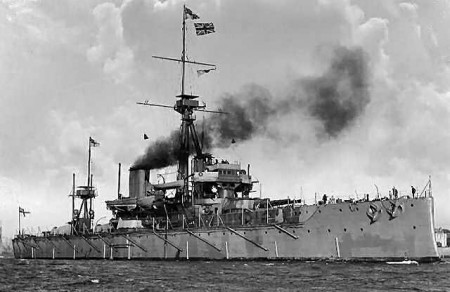
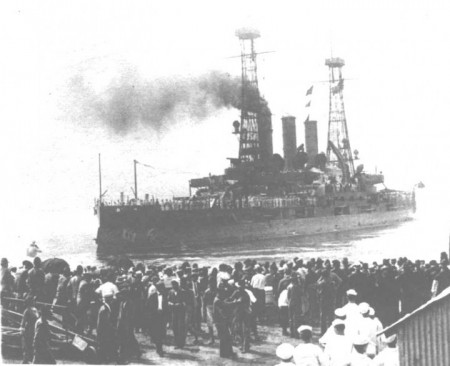
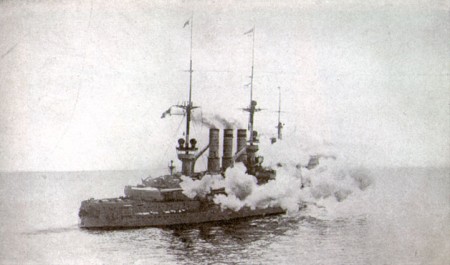
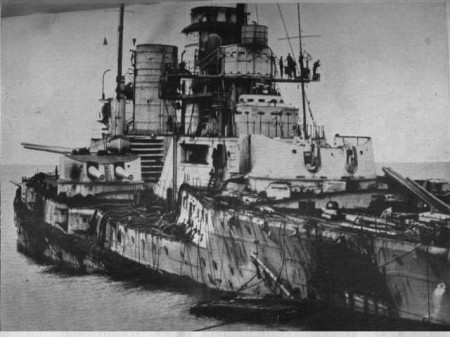
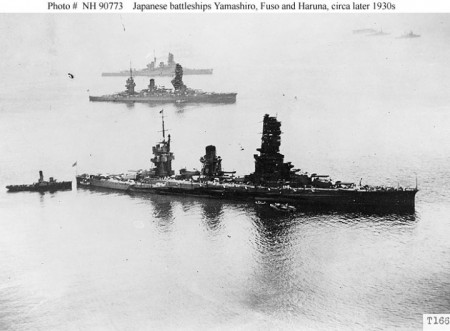

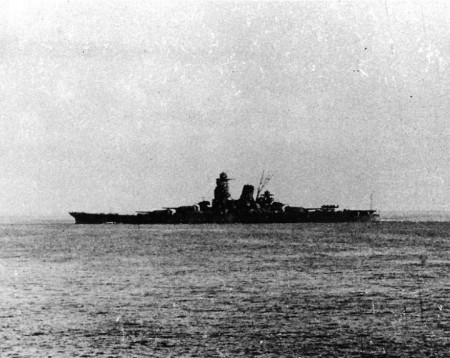
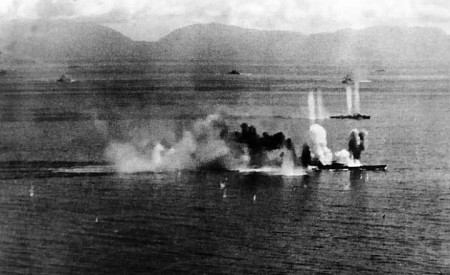
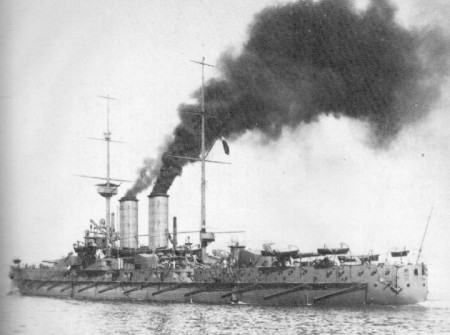










very interesting Scott, I went to a naval college and we were surrounded with things relating to battleships – in fact I even shared a dormitory with the great great grandson of Admiral Jellicoe of Jutland fame. The ship I always revered as a kid was the mighty Yamato, even going so far as building a big model of it at one point. To my mind, the only thing cooler than a battleship is a battleship in dazzle camouflage!
(and the uncoolest thing a battleship has ever done is star in Cher’s ‘turn back time’ video)
Unless I’m hallucinating, I saw this posted to Hacker News a couple of weeks ago. I found it unconvincing then as now, on a number of levels.
First, manoeuvre warfare does not consist simply of archers on horses. It is not incompatible with phalanxes–as an examination of Alexander’s campaigns will show. It is quite compatible with infantry-heavy army, as demonstrated by many of Napoleon’s campaigns (Ulm, Jena/Auerstadt, etc.) and several of those of the US Civil War (2nd Manassas, Vicksburg).
Second, as to the Mongols, an all-cavalry army is fine if you have lots of pastureland and open country for fighting. West of about eastern Hungary, the limits start to show. The extensive pasturage required introduces vulnerabilities, as the Manchurian reduction of the Mongols and the US reduction of the native tribes demonstrated.
Third, battleship fleets–dreadnought or sail–seldom engaged, but could be the force backing up a blockade. The British blockades of the continental powers had huge effects on the Napoleonic Wars and WW I. The light craft did a lot of the work, but the battle fleet protected them.
Finally, ICBM as phalanx? ‘Tis very like a whale…
Finally, shouldn’t “penii” be “penes”? And wouldn’t the army that first did in the phalanx have been more like to say “mentulae”?
This is utterly fascinating, and I do hope that the discussion will develop following George’s comments. Sadly I know almost nothing about boats. Aircraft are more my thing: I recently saw a documentary on the Thach Weave, a manoeuvre tactic that finally provided an answer to the Japanese Zero fighter.
After I’d read the post down to and including the Battle of Jutland, I was convinced Scott Locklin had written it immediately after he’d been infuriated beyond endurance and had decided: “Something’s going to get it – both barrels! Ah yes, battleships and those bloody idiots who built and commanded them. And to hell with objectivity”. How else to explain such a daft paragraph as that about Jutland? As George states in his brilliant response, the successful blockade of Germany and its allies, particularly through the successful bottling-up of the High Seas Fleet, had a huge impact on the outcome of WWl. After Jutland, an American journalist summed-up the action: “The German fleet had assaulted its jailor but was still behind bars”.
I enjoy practically every Scott Locklin post and this is no exception, but really…..
The idea of battleships duking it out in the high seas is pretty ridiculous when you stop to think about it.
The Graf Spee and the Bismarck don’t sound particularly ridiculous. And the problem they present is inescapable: imagine if no country had battleships except for Germany.
Also, I think this confuses ends with means. The controlling, or attacking, sea lines of communication was the end; battleships were the means. Had aircraft not developed as quickly as they did during the interwar years, not having battleships would have meant losing sea lines of communication.
But aircraft did develop, which meant that the goal of sea power was pursued by a means different from, but completely analogous to, battleships. Aircraft carriers are better battleships than battleships.
And the Battle of Jutland was really an exercise in how moronic modern navies are.
Interestingly, the recently reviewed Germania makes a good case that the German navy was moronic. As a continental power, with practically no coastline and relatively easily covered SLOC, the German navy had no hope of being anything but a waste of resources, and a source of delusion as to the odds of prevailing.
Further, it ignores the seemingly salient fact the the Battle of Jutland was instigated by the German navy in order to break the Britain’s naval blockade, which was made possible in large part by the existence of British battleships.
Many aspects of the Western way of phalanx war survive; we still have our proverbial battleships; useless as they may be. We just don’t recognize them as such. For example; armored missile silos, as opposed to missiles on rail cars.
What about submarine launched nuclear missiles?
The value of silo based ICBMs is precisely that they were — and are — essentially invulnerable to nuclear weapons. The idea being that no attack could significantly weaken the ability to strike back. Horrible logic, but effective.
[The aircraft carrier] is itself probably made obsolete in real modern warfare by the cruise missile, the internet and the satellite
Perhaps. But I’ll bet the PRC, in its inexplicable obsession with Taiwan, very much takes into account US aircraft carriers in pondering whether this is the week to invade.
I spent hours arguing with folks about the relative uselessness and utility of Battleships after HN linked my blog. I’m still pretty sure I’m right, but it’s cost me thousands in billable hours arguing about it with folks, so I’m not so interested in discussing it further. Stating that the Battle of Jutland was any kind of success for anybody does rankle though. It was about as much of a success for anybody as the Second Battle of Ypres was, for pretty much the same reasons.
I suppose it’s kind of interesting that people have such an emotional attachment to the old battlewagons; I’m pretty sure if I insulted 20 men’s wives, true or not, I’d have gotten less of a response. Certainly they really inspired me, especially when I was a kid. The Yamato was also my particular favorite, and I’m somewhat kicking myself for not including any dazzle camo photos.
Perhaps the utility of battleships is better assessed by considering what might have happened in their absence (or in the absence of their successors, the aircraft carrier). Granted, that is far more speculative, but what if the British had eschewed battleships, but the Germans did not.
Could Britain still have maintained a blockade?
Similarly, and somewhat OT, the utility of B-17s and the daylight bombing campaign (BTW, another excellent article, which, having been beyond the reach of electricity, I wasn’t able to comment on) is based on more than its explicitly intended effects. Without air supremacy, D-Day might well have been a failure. We had air supremacy solely because German fighters had to respond to the B-17 missions, giving our fighters (available in essentially unlimited quantities compared to the Germans) the opportunity to engage in attrition warfare.
By D-Day, therefore, the strategic bombing campaign had essentially eliminated the German air force, despite its having been largely ineffective in its direct application.